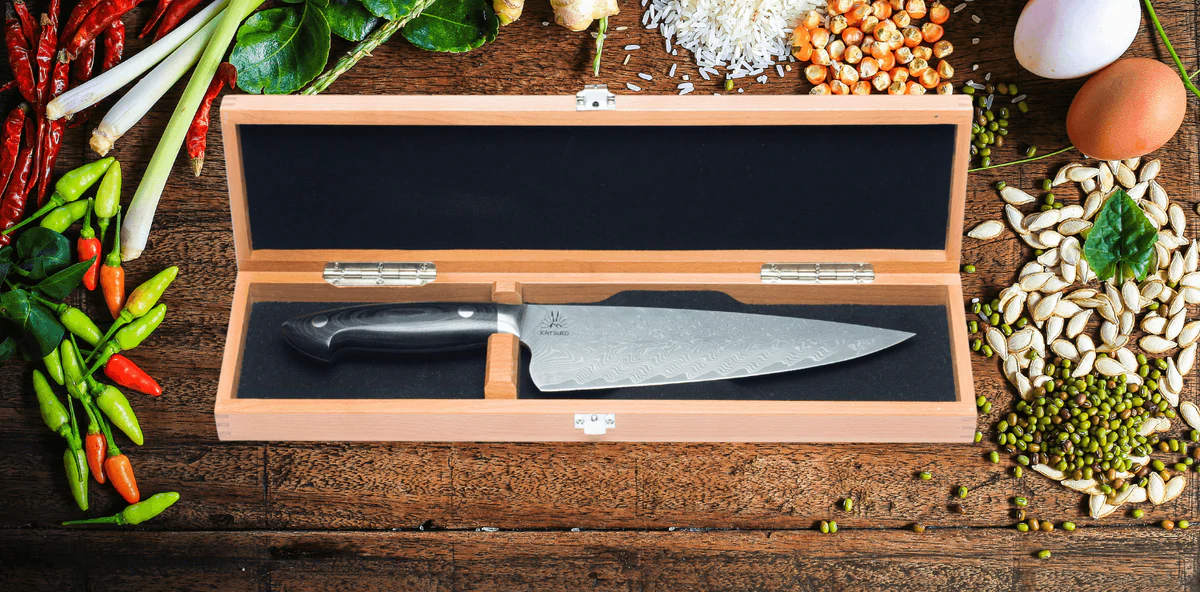The whole story of Damascus blades
From ancient origins to craftsmanship
The first blades made of Damascus steel were produced in India and the Middle East from wootz steel made in India. This is a steel particularly rich in carbon. The blades produced using this steel display sublime unique moiré patterns, created by the crystallization of the metal. These patterns, in addition to the intrinsic quality of the material, have contributed to the fame of the Damascus steel blade.
During the crusades, the Franks praised these blades which seemed indestructible to them. However, production ceased in the 17th century due to exhaustion of resources, low transmission of expertise that was kept too secret, and difficulties in supply. In the 19th century, advances in metallurgy revived this expertise through the work of an inspector at the Paris Mint: Jean-Robert Bréant.
Top-tier manufacturing technique
In its modern artisan version, Damascus steel is produced by superimposing different types of steel, more or less hard, more or less rich in carbon, hence its name: "multilayer steel". The decorations no longer come from crystallization but are the intentional result of the blacksmith's work.
He typically proceeds using two or three types of steel (hard, soft, carbon, nickel, etc), which he selects considering aesthetic and technical considerations, and which he hot welds by successive hammering: this is the corroyage technique.
Once the corroyage phase is completed, it is time to reveal the patterns. To do this, a product, usually acid, is applied to the Damascus steel blade. The steels being different, the acid will not work with the same intensity on all and it is this difference in intensity that will reveal the patterns.
An industrial version: Powder metallurgy
Damascus steel is nowadays also produced industrially thanks to powder metallurgy. It's a recent technology based on ancestral knowledge. The steel obtained is no longer made by the fusion of different steels, but by sintering: heating a powder (or a set of powders for Damascus steel) to bring it to fusion, like the first potters!
This technology allows to create Damascus steels of an extremely fine and regular grain, with very varied and mastered decorations.
Why acquire a Damascus steel blade ?
Regardless of the manufacturing method, Damascus steels primarily feature unique patterns that are an excellent reason in themselves to own one of these blades.
On the technical and functional side, Damascus blades are also rich in carbon, giving them increased strength and outstanding sharpness, appreciated both in the kitchen, at the table...or when hunting!
This article deals with Damascus blades in general, not the ones sold on this site.


The Kiritsuke: A true versatile knife in your kitchen
The Best Kitchen Knife in the World!